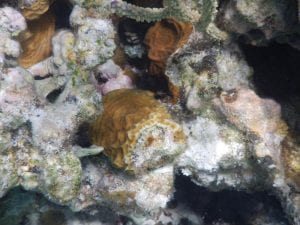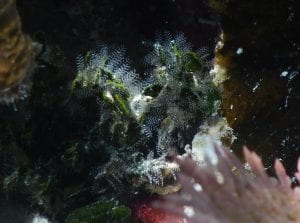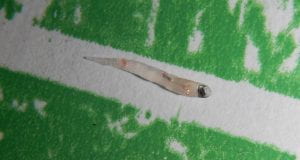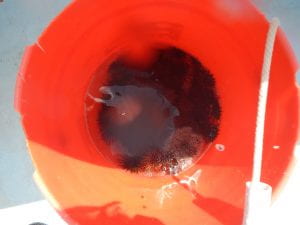



Today we finished our parrotfish study. We concluded that parrotfish mainly eat algae. On the reef Zoe and I saw numerous stoplight parrotfish. We met as a group for most of the morning and made our poster. In the afternoon we met to walk the trails around the island. We went to “the graveyard” which is a beach full of fossilized corals and shells. We learned that these shells and corals all eventually become the limestone that forms the caves of Belize. It was really cool to see how the dead and bleached corals looked compared to the living ones that we have been seeing on the reef. We also saw several critters such as sea urchins, sea snails, a sea star, and more.
We also waded through the sea grass to see what we could find. The highlight was a huge crab and a couple fishes!
At night it was too windy for a night swim, so we dropped a light off the dock and observed and caught several things that were attracted to the light. The plankton is attracted to the light, which attracts the fish, and the fish’s predators. We were able to see glass eels (the larvae form of fish and eels that swim in open ocean), shrimp, fish, and a squid! Claire managed to catch the squid and we got to see it ink! We searched up what the glass eel was and it was a bone fish larvae.









